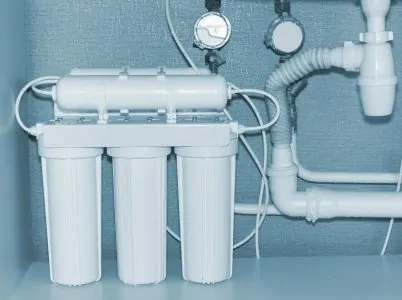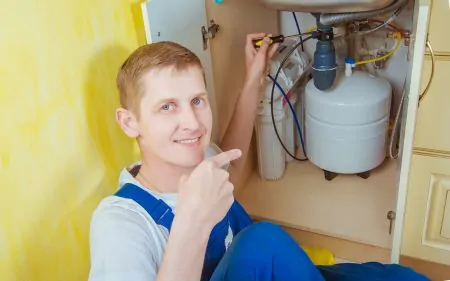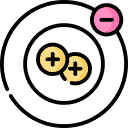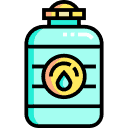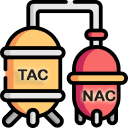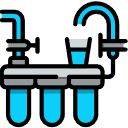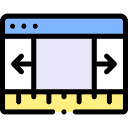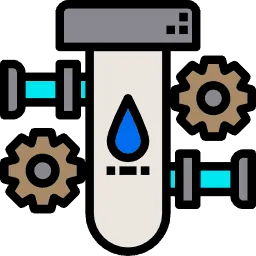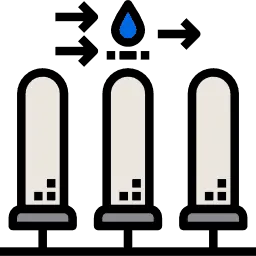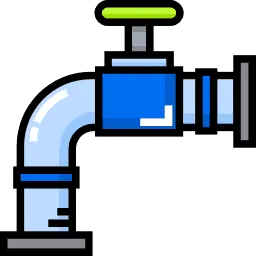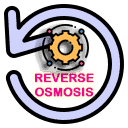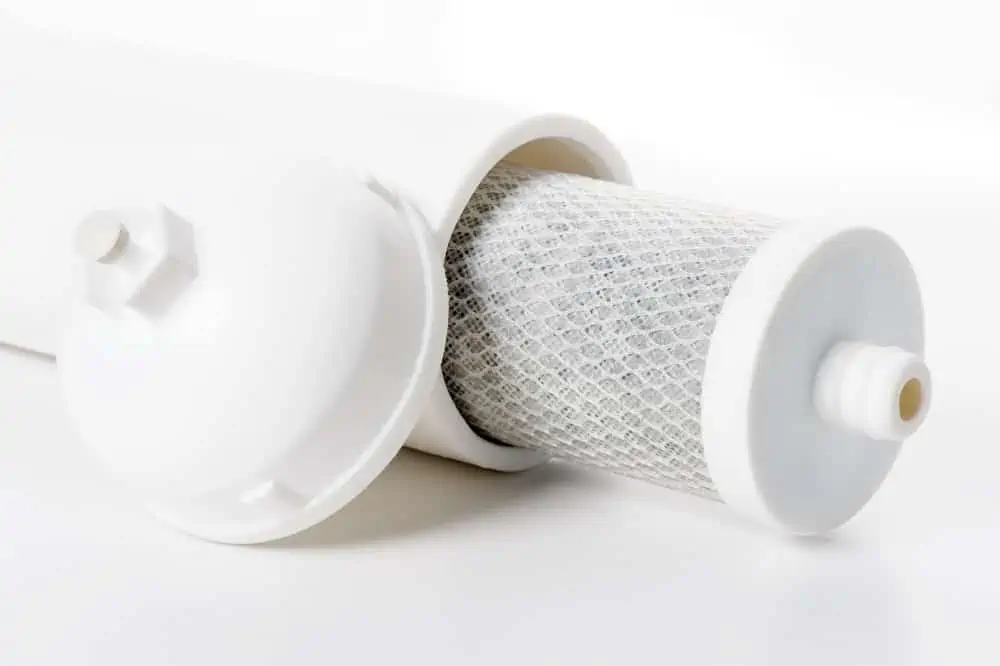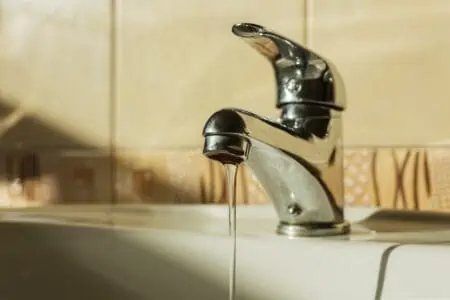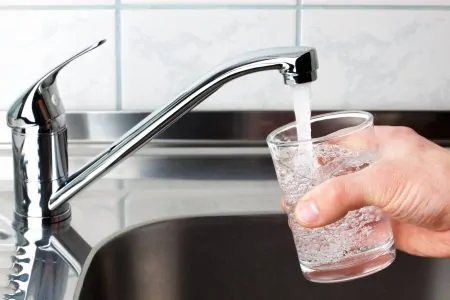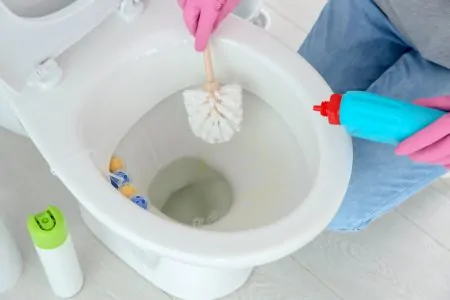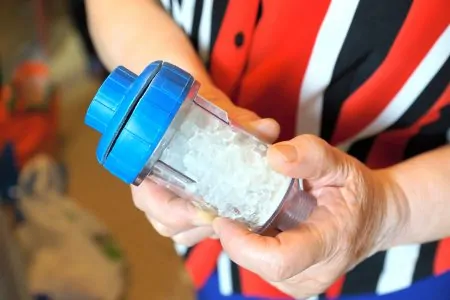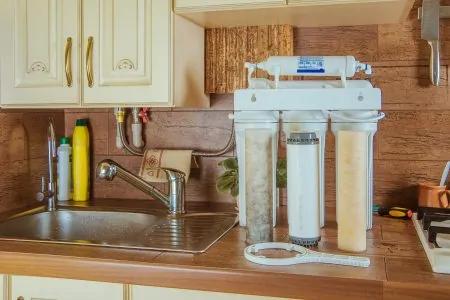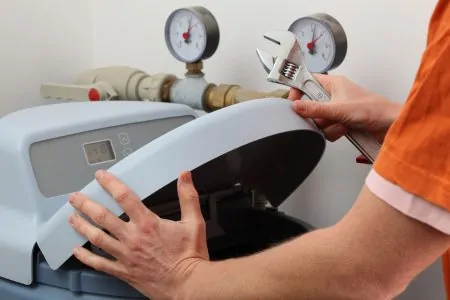The mineral content of hard water can clog your pipes and appliances with scale, stain glasses and dishes, and leave your clothes dull and stiff. A water softener will help you overcome this by either removing or altering the water’s mineral content.
If you want to soften water, you have a huge selection of different softeners to choose from, whether you want to treat a single outlet or your entire home’s water supply. The only downside of so many options is that you might struggle to choose a model from the many softeners on offer.
To help you find the best water softener for your home, we have reviewed seven of the top-rated products available today. We chose these softeners based on their type, size, effectiveness, and flow rate.
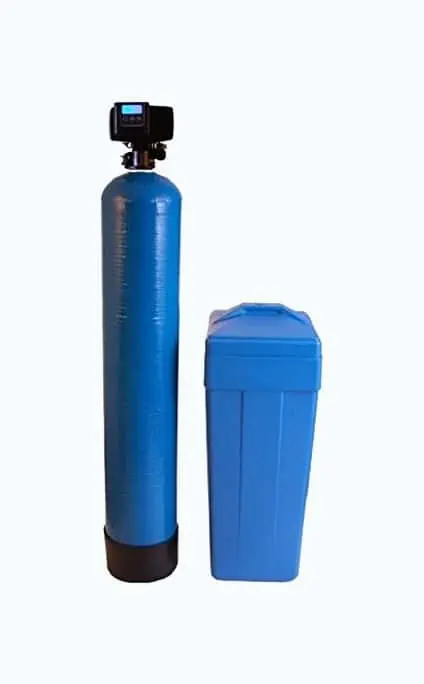
- Digitally metered control valve
- 5-year warranty
- Includes bypass valve
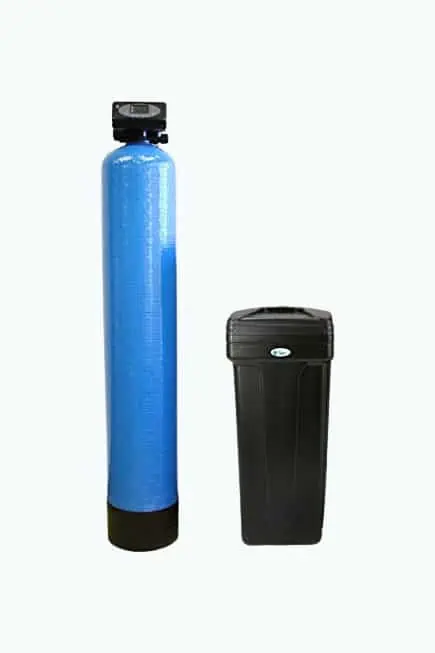
- Quick-connect fittings
- 48,000-grain capacity
- Demand initiated regeneration
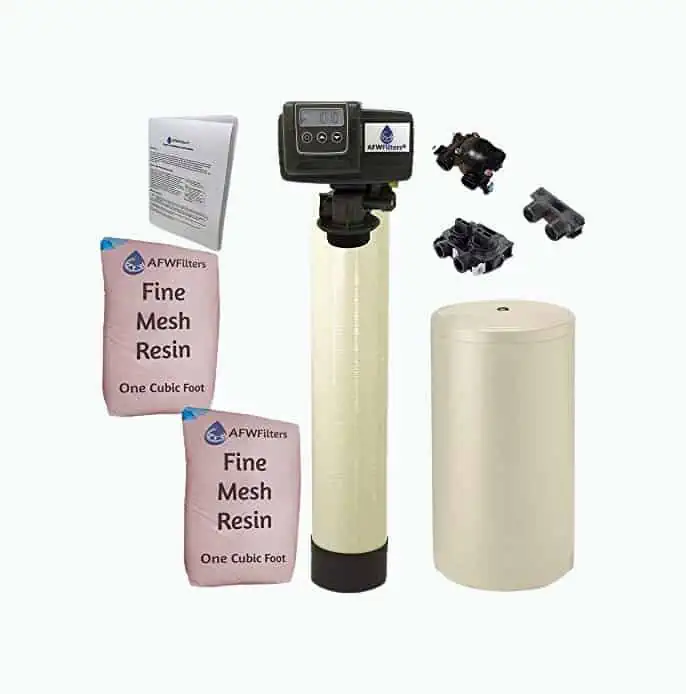
- Meter-based regeneration
- 30-day satisfaction guarantee
- Complete system
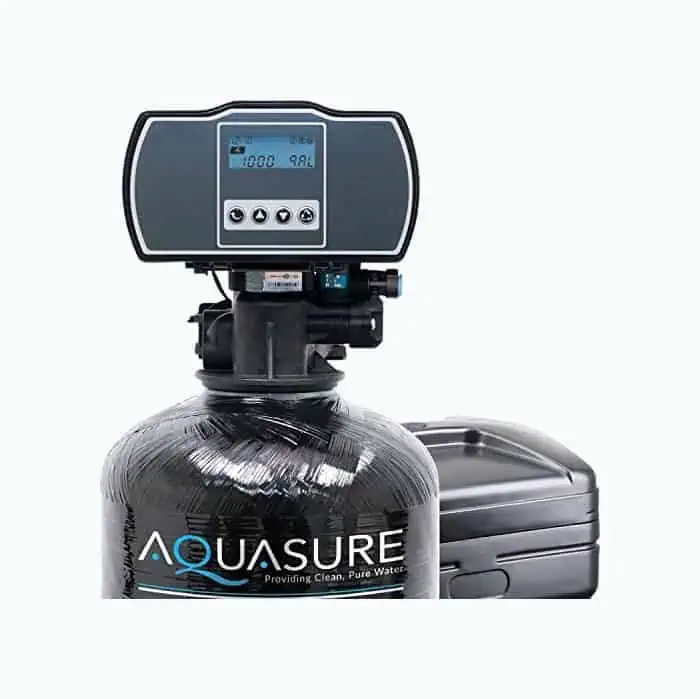
- Suitable for up to 5 people
- Up to 11% more energy efficient
- Customizable digital control head
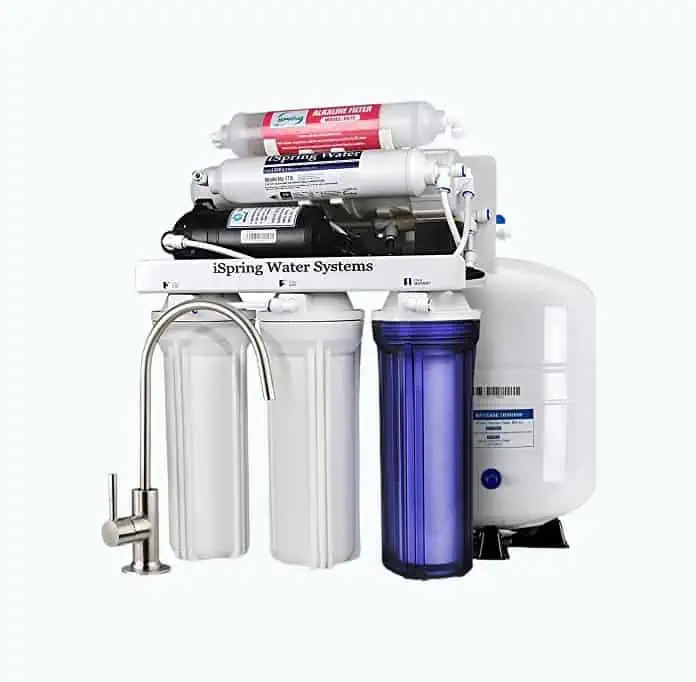
- Extensive installation guides
- Suitable for ice or coffee makers
- Six-stage filters
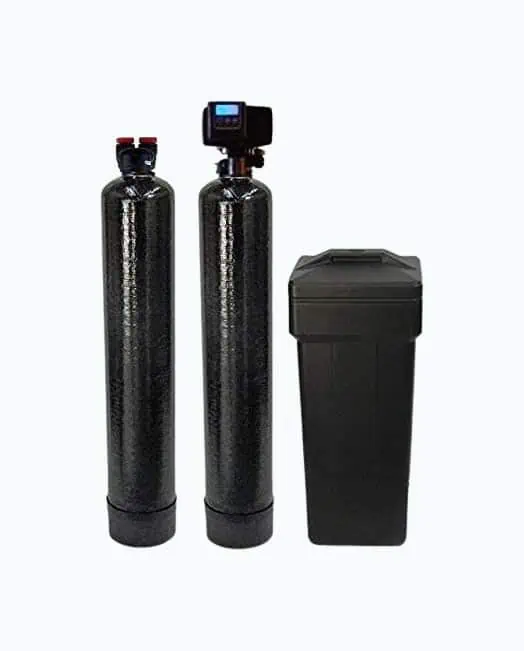
- Smaller than rival models
- 12 GPM flow rate
- Very user-friendly instructions
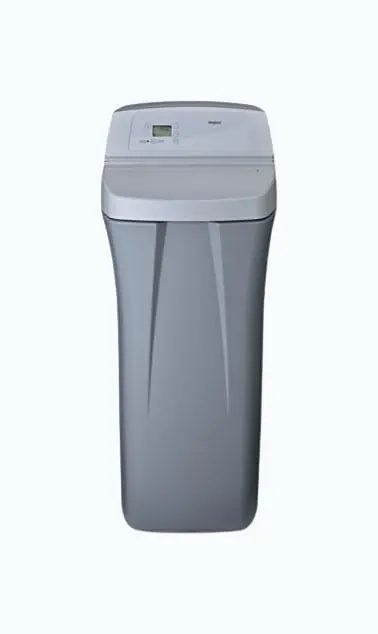
- Made in the USA
- NSF-certified
- 30,000-grain capacity
Review Methodology: At Sensible Digs, we carry out a thorough analysis and hands-on testing of water softeners, comparing them on key performance criteria. Our professional team measures each product’s effectiveness, longevity, and user-friendliness, providing you with an unbiased evaluation based on factual data and first-hand experience. We delve into the design choices of each softener, assessing their impact on user experience, and highlight the unique features that set each product apart. Our rigorous research process enables us to rank and review products based on their results, giving you a comprehensive guide to the best water softeners on the market.
Best Water Softener Reviews of 2024
There are countless water softener designs available around the world today. To help you find the best water softener for your home, we have reviewed what we consider to be seven of the best products you can currently buy. As ion exchange units are the most popular and reliable type, most of our reviews fall into this category.
AFWFilters Fleck 64k Water Softener
Best Overall Water Softener
Capable of softening your entire home’s water supply, this 64,000-grain unit from AFWFilters utilizes 8% crosslink resin.
The Fleck includes a digital control valve, bypass valve, brine tank, and everything else you need to connect it to your plumbing. This means it will be ready to install out of the box and you will be able to enjoy softened water very quickly.
The blue resin tank measures 48 inches by 12 inches and is made in the United States. The brine tank is 15 inches by 17 inches by 33 inches.
With this in mind, make sure you have enough room to accommodate both tanks before buying this system, as it is not small.
What We Like
Digitally Metered Control Valve
This system is fitted with a Fleck 5600SXT digital valve. This measures the water flowing through the softener tank and regenerates it only when needed. This could help you save money on water and salt as it won’t clean the system unnecessarily.
The valve has an LCD monitor that displays the current status of the system and error codes to help you overcome any issues. It also has touchpad controls so you can manually adjust the settings if you want to assume greater control over the system.
Customer Support
After you receive your Fleck system, AFWFilters provides customer support and technical advice to help you install your unit, via a toll-free number. They will also answer any questions you have about programming your system.
Once the unit is installed, you will also have the protection of a five-year warranty on the valve and a 10-year warranty on the tanks.
Installation Kit & Bypass Valve
This unit includes an installation kit, which contains a standard 1-inch male national pipe thread. You should be able to connect this to your plumbing, even if you are relatively inexperienced.
A bypass valve is included so you can easily divert water away from your softener. This is great when you want to clean your brine tank or renew your resin without shutting off your home’s water.
What We Don't Like
Video instructions are provided on a USB drive to walk you through installing the system. Some customers find these instructions hard to follow. Thankfully, there are better reviews of the company’s telephone customer support, which guided people through any issues they encountered.
Product Specs
| Capacity (Grain) | 64,000 |
| Flow Rate | Approximately 14–16 GPM |
| Valve | Fleck 5600SXT digital metered regeneration |
| Type | Ion exchange, salt-based |
| Warranty | 5-year valve, 10-year tanks |
Our Ratings
User Experience
Tier1 Everyday Series 48,000 Grain Water Softener
Best Water Softener for Hard Water
This Everyday Series ion exchange water softener from Tier1 has 48,000-grain capacity. It is a whole-home system available with blue or black tanks. This relatively simple system will effectively remove hardness minerals from your water, making cleaning products more effective and preventing limescale buildups in pipes and appliances.
It regenerates within two hours, and this process can be manually set to occur at night while you’re asleep. The unit features a digital control valve with an easy-to-read LCD, which provides relevant information from your system, helping you address any issues before they become more serious.
What We Like
Quick-Connect Fittings
All the fittings you need to connect this softener to your plumbing are included with this system. It has three-quarter-inch connections, tubing for the brine tank and drain line, and all required mechanical components. Customer reviews also mention receiving additional 1-inch connections.
Tier1 advises that homes with CPVC or PEX plumbing might require additional compression fittings. If this applies to you, the brand recommends Sharkbite products.
Space Saving
The softener tank measures 54 inches tall and 10 inches in diameter, while the brine tank measures 42 inches by 14 inches. The proprietary turbine meter is incorporated into the bypass valve, meaning the unit as a whole occupies less space.
The company advises this can save as much as 4 square feet of floor space compared to some other leading models.
Dedicated Customer Support
This system is sold with a “100% no-worries guarantee”, although it isn’t clear how long this lasts. Tier1 has a dedicated customer support team that speaks English and Spanish. They are based in the United States and are available to answer any queries about the product and how to install it.
Demand Initiated Regeneration
This softener’s valve is fitted with a water probe (propeller) that measures how much water you use. It uses this information to regenerate the resin tank when necessary, although it is possible to set a manual override if you want it to occur at a specific time.
The benefit of demand-initiated regeneration is you can save money on salt and water as the system won’t regenerate unnecessarily, reducing waste.
What We Don't Like
Unclear Installation Instructions
Some customers found the included instructions to be unclear and somewhat confusing. Most of these people were able to overcome this issue with some patience and help from customer support, but this did prolong the installation process.
Product Specs
| Capacity (Grain) | 48,000 |
| Flow Rate | 11.2 GPM |
| Valve | Digital metered regeneration |
| Type | Ion exchange, salt-based |
| Warranty | “No worries” guarantee, duration not specified |
Our Ratings
Personal Perspective
AFWFilters Iron Pro 2 Combination Water Softener
Best Water Softener for Well Water
A water supply taken from a well generally presents more challenges than a municipal water supply. It is your responsibility to keep clean and generally won’t be regulated. In addition to harmful chemicals and bacteria, there is a strong possibility that your water will be hard and could contain high iron levels (1).
The Iron Pro 2 is designed to soften water by removing hardness up to 75 GPG. It also helps remove iron in the 6–8 PPM range and manganese below 6 PPM. The fine mesh resin can also help eliminate sediment, rust, and sand.
In addition to reducing scale buildups in pipes and appliances, this system could help eliminate red rust stains on sinks and tubs, which are caused by iron in the water. The system has a flow rate of 16 GPM, making it powerful enough for households of up to seven people.
What We Like
Meter-Based Regeneration
The system features a Fleck 5600SXT digital control, which utilizes metered regeneration. This means your system will only remove the hard minerals from the softener tank’s resin balls when necessary, reducing water and salt waste.
If your water consumption increases, the meter will detect this and regenerate more often. If your consumption decreases, it will regenerate less frequently, so you will always have soft water without any manual input.
Peace of Mind
AFWFilters includes a 30-day satisfaction guarantee with this system. If you decide to keep it, you will be protected by further warranties of five years on the control head and 10 years on the tanks.
Complete System
This water softener includes a softener tank containing a 64,000 grain count, fine mesh resin, a brine tank, a metered control, and a bypass valve. It has everything you need to soften hard water and reduce the amount of iron.
What We Don't Like
Lack of Installation Instructions
Although AFWFilters provides toll-free telephone and email support, many customers find that there are either no instructions included or, if there are, they lack sufficient detail. If you aren’t an experienced plumber, this could mean hiring a professional to install it, potentially increasing your costs significantly.
Product Specs
| Capacity (Grain) | 64,000 |
| Flow Rate | Approximately 14–16 GPM |
| Valve | Fleck 5600SXT digitally metered regeneration |
| Type | Ion exchange, salt-based |
| Warranty | 5-year valve, 10-year tanks |
Our Ratings
Community Feedback
Aquasure Harmony Series Water Softener
Best Water Softener for Reducing Limescale
Limescale is the most common side effect of living in a hard water area, potentially narrowing or clogging your pipes and damaging appliances. The Aquasure Harmony water softener eliminates these problems by removing hard minerals and softening the water throughout your home.
It has a 48,000-grain capacity. It primarily removes hard minerals including iron and magnesium — which can otherwise dry your skin and cause brittle hair in addition to damaging your home’s plumbing.
What We Like
Great Choice for Large Homes
This Harmony water softener is designed for families of up to five people or anyone living in a four-bathroom home. If you have a larger household, this softener will fulfill your requirements.
Up to 11% More Energy Efficient
This softener is more energy efficient than many of its competitors as it regenerates quickly, reducing your water waste. Aquasure claims it is as much as 11% more energy efficient than some of the other leading products.
Customizable Digital Control Head
The user-friendly digital control head allows you to customize the unit’s settings to meet your household’s requirements. As the display is lit, you will even be able to make adjustments when it is dark.
What We Don't Like
Mixed Customer Service
Some reviews praise Aquasure’s customer support, while others complain that they did not find them very helpful. Complaints include waiting a long time for a response or receiving no help to address problems. It sounds like the individual customer experience is largely down to luck.
Leaky Brine Tube Connection
Many customer reviews mention discovering leaks from the brine tube connection. This is apparently relatively easy to fix but it is something to keep in mind before buying.
Product Specs
| Capacity (Grain) | 48,000 |
| Flow Rate | 12 GPM |
| Valve | Bypass valve with 1” and out NPT yoke |
| Type | Resin-based |
| Warranty | 5-year |
Our Ratings
First-Hand Impression
iSpring Six-Stage Undersink Drinking Water Filter
Best Salt-Free Water Softener
If you would struggle to fit a whole-house water softener unit into your home, this iSpring under-sink reverse osmosis water conditioner is a great alternative. It has a six-stage filter system: five to remove contaminants from your water and one that adds beneficial minerals back into it.
iSpring claims this filter removes lead, chlorine, fluoride, sodium, bacteria, and viruses. It also adds healthy minerals such as calcium and magnesium before the water leaves the unit.
The unit measures 14.5 x 5.2 x 18.5 inches and is designed to be installed beneath a sink. This means it will filter the water for a specific outlet rather than your entire home. Despite its small size, it can filter up to 75 gallons of water per day.
What We Like
Easy Installation
All parts needed to install the unit are included and easy-to-follow written instructions and illustrations are provided. There are also instructional videos available and access to iSpring’s technical support if required. The fittings are push-to-connect and color-coded to remove any guesswork from installation.
Choice of Water Output
This product includes a nickel-plated brass faucet, which is designed for mounting on your countertop. Alternatively, you can connect the output lines to a coffee maker or ice maker to treat their water, if you prefer.
Excellent Filters
The first-stage filters have transparent cases, which makes it easy to see when they become coated with sediment and need to be replaced.
A granulated activated carbon filter (GAC) helps remove contaminants and a CTO (color/taste/odor) filter improves the water’s taste and removes any unpleasant smells. The final stage remineralizes the water.
All filters must be replaced at some point, but when this needs to occur will vary based on your water quality and how often you use it. Read the manufacturer’s directions to determine what needs to be replaced and when.
What We Don't Like
Leaky Faucet
Customer reviews mention that the faucet included with this system sometimes leaks. As the system is guaranteed for a year, you will be able to get a replacement if this starts happening.
Product Specs
| Capacity (Grain) | Cleans 75 gallons per day |
| Flow Rate | Information not supplied |
| Valve | Information not supplied |
| Type | Reverse osmosis filter |
| Warranty | 1 year |
Our Ratings
User Experience
ABCWaters Fleck 48,000-Grain Water Softener
Easiest to Install Water Softener
This Fleck system from ABCWaters is designed to soften municipal water for a household of up to five people.
It has a 48,000-grain capacity and the softener tank is prefilled with 10% crosslinked resin. This higher percentage means the beads are smaller and the resin has a longer life expectancy.
This product includes almost everything you need for a complete home water-softening solution. It contains the brine and softener tanks, a Fleck 5600SXT valve digital meter, a bypass, and a yoke.
What We Like
Great for Smaller Spaces
The softener tank has a 10-inch diameter and is 2 inches tall, while the brine tank measures 14 inches by 36 inches. This system’s tanks are smaller than many of its competitors, which can make a significant difference if you have limited space.
Flow Rate
With a flow rate of 12 gallons per minute, this unit can easily supply a family of five with enough water for their daily tasks. This means you will be able to clean your laundry while filling a bathtub at the same time, rather than having to compensate for an inadequate filter.
Installation Instructions
An experienced technician wrote the installation guide supplied with the system. It was then revised following feedback from a novice installer. These two viewpoints have resulted in an easy-to-follow, step-by-step guide.
Videos are available on the manufacturer’s website to further guide you through the installation process, as well as the programming of the digital meter.
What We Don't Like
Additional Parts Needed
It is important to know that the drain line and water connectors aren’t included with this system. It might take you a few trips to your local plumbing store as there is not a complete list of the extra parts you need.
Product Specs
| Capacity (Grain) | 48,000 |
| Flow Rate | 12 GPM |
| Valve | Fleck 5600SXT valve digital meter |
| Type | Ion exchange, salt-based |
| Warranty | 5-year valve, 10-year tanks |
Our Ratings
Personal Perspective
Whirlpool 30,000 Grain Water Softener
Best Compact Water Softener
This Whirlpool product is a whole-home system with a difference. Both the softener tank and brine tank are enclosed in a single unit, making it more compact and helping you save space. The housing measures 19 inches deep by 18 inches wide by 43.5 inches high.
The bypass valve and salt indicator are also built into this unit. The meter constantly measures the amount of salt required and informs you when it needs to be topped up.
What We Like
Made in the USA
This unit has been designed, assembled, and packaged in the United States. This means replacement parts should be readily available if you need them. The system is also NSF-certified, ensuring it has been tested for safety and quality (2).
Warranty
Whirlpool provides a one-year warranty on parts and labor. This can be extended to two years if you purchase three bottles of the brand’s water softener cleanser.
A further warranty of three years protects the electronics and there is a 10-year guarantee on the tank.
Grain Capacity
The grain capacity of this softener is 30,000 and it removes 95 GPG of hardness and up to 8 PPM of iron. This makes it suitable for a household of up to four people.
What We Don't Like
Installation
There are mixed reports regarding how complicated this system is to install. Although most people had no issues, some have found it very difficult to install the unit. It might not be suitable for novice plumbers, so always remember that you can call for professional help if you aren’t confident.
Product Specs
| Capacity (Grain) | 30,000 |
| Flow Rate | Not specified |
| Valve | Demand calculated regeneration |
| Type | Salt-based |
| Warranty | 1-year full parts and labor, 3 years electronics, 10 years tank. |
Our Ratings
Community Feedback
| Product | Best | Capacity (Grain) | Flow Rate | Type | Warranty (year) |
|---|---|---|---|---|---|
| AFWFilters Fleck 64k | Overall Pick | 64,000 | 14–16 GPM | Ion exchange, salt-based | 5-year valve, 10-year tanks |
| Tier1 Everyday Series | Hard Water | 48,000 | 11.2 GPM | Ion exchange, salt-based | N/A |
| AFWFilters Iron Pro 2 | Well Water | 64,000 | 14–16 GPM | Ion exchange, salt-based | 5-year valve, 10-year tanks |
| Aquasure Harmony Series | Reducing Limescale | 48,000 | 12 GPM | Resin-based | 5-year |
| iSpring Undersink Water Filter | Salt-Free | 75 gal. per day | N/A | Reverse osmosis filter | 1 year |
| ABCWaters Fleck Water Softener | Easiest to Install | 48,000 | 12 GPM | Ion exchange, salt-based | 5-year valve, 10-year tanks |
| Whirlpool Water Softener | Compact | 30,000 | N/A | Salt-based | 1 parts/labor,3 electronics,10 tank |
The Impact of Hard Water
The majority of people in the United States receive a hard municipal water supply. This water has flowed over rocks and soil, collecting minerals on its way to reservoirs and water supplies. Magnesium and calcium carbonates are the most common minerals found in hard water (3).
These minerals are harmless to humans and have health benefits, but they are less kind to your home’s plumbing. As hard water flows through your plumbing and appliances, it leaves its mineral content behind. In time, these minerals accumulate, leaving you with limescale and other deposits.
These deposits narrow pipes and can eventually create blockages, forcing your appliances to work harder. If they are not dealt with, this will increase your energy bills and potentially damage your appliances.
Hard water can also cause white, cloudy marks on dishes and your bathtub, faucets, and sinks. It might also leave your skin dry and hair brittle and dull. Soap and shampoo might not create the suds you expect, and your laundry could be faded and stiff.
How Do Water Softeners Work?
Water softeners remove or alter the minerals that cause hard water, such as calcium and magnesium. This can be achieved using several methods, depending on whether you want a whole-home solution or only want to treat specific outlets. Softener types include:
How to Choose the Best Water Softener
In addition to choosing the type of water softener, you will also need to make some other important decisions. Answering these questions will help you narrow down your options and ensure you get a softener that fulfills your requirements:
How to Install a Water Softener
Most modern water softeners are easy to install with minimal plumbing experience. Here are the basic steps for fitting each type of softener.
Quick Tip
